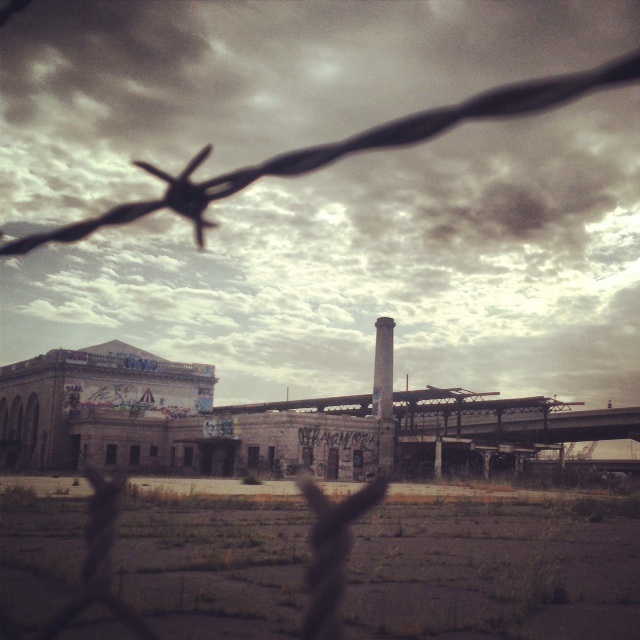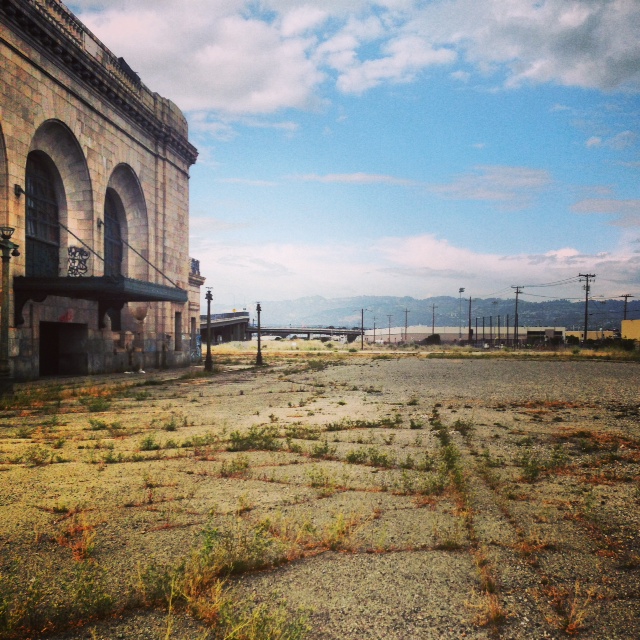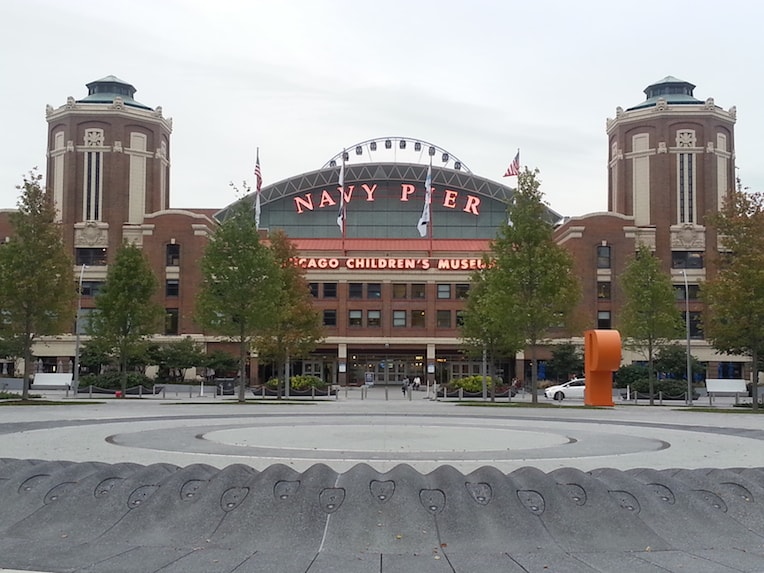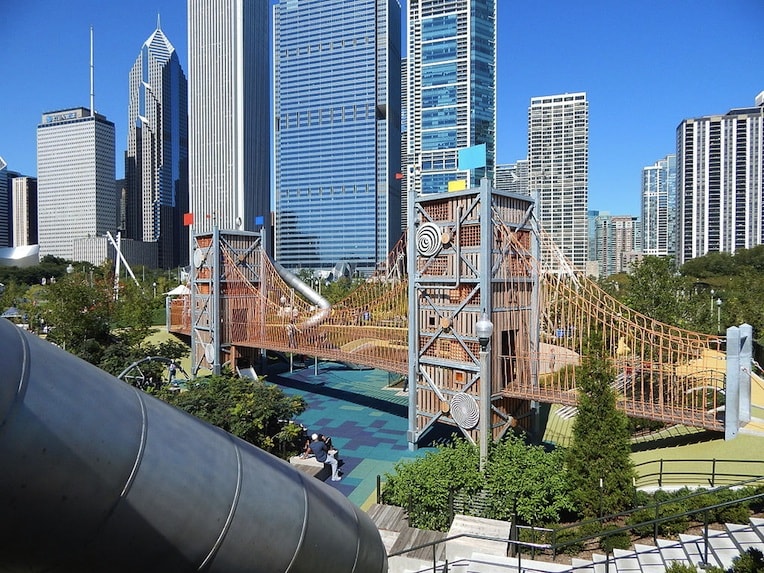Despite living there, I’d never considered the historic connection between the Bay Area and Chicago. After all, a huge geographical distance separates these regions. Plus, what would hard-working, gritty, flat and super-sized Chicago have anything to do with easygoing, wealthy, hilly, super liberal San Francisco? A historic train station can belie this presumption.

Oakland Train Station
Just across the Bay however, Oakland, California has always had ties to Chicago through the railroads. I first read about these economic and social ties in American Babylon, a must-read for anyone curious about Bay Area history, black history, and American city development (it’s pretty dense though – let’s say it’s a “must-skim” at least). With my recent trip to California to see friends and conduct some top-secret tour research for Chicago Detours, I got a chance to uncover some of this history firsthand with a visit to West Oakland’s old and abandoned 16th Street train station. This train station was the terminus for the transcontinental trains from Chicago from 1912-1994.
Once a thriving community surrounding a bustling train depot, today West Oakland is notoriously dangerous. The construction of highway in the 1950’s isolated it from the rest of the Bay Area. Shortly after, the laying of the BART train tracks in the 1960s only further isolated it.
I would never let my father know I did this, but a few days ago I left downtown Oakland on foot, walking alone – during daytime of course – to get to the train station.
West Oakland
Along the way, I passed historic homes that looked like something out of a Sears kit. The knobby accents and curly-q carvings seem Sears-y. Their size and architectural details are much more modest than the San Francisco ilk. They are just little cottages crammed together with perhaps a tiny patch of yard. A lot of Pullman train porters lived here, which we’ll talk about in Part Two of these California blog posts. I walked by little house after little house, and then suddenly, there was a giant expanse before me.

Designed by architect Jarvis Hunt, who had his offices in the Monadnock Building for much of his architectural career, this stone behemoth of a building seems to patiently wait at the far edge of West Oakland, with chopped-off, elevated train tracks in the back suspended as though in the off chance a train might someday return. The wide open overgrown pavement in front of it further makes the building seem like a lonely relic. It was likely once used for pick-ups, drop-offs, streetcars, and buses, but it’s very lonely today.
Other examples of historic architecture in West Oakland, such as former factories and warehouses, elicit vitality as they have been taken over by artists, musicians, religious groups and non-profits. This building feels like a void. Especially when you imagine the amount of people who arrived here from the East looking to make their California dreams come true.
Sadly Abandoned
While I did not get to scale the barbed wire fence to enter the Oakland train station, I imagine the interior somewhat similar to Hunt’s Kansas City train station, which I have been through and is very much active today. Both train stations have giant sweeping arches on the exterior that clue you in to the high ceilings inside. The cathedral-like lofty ceilings you find in the architecture of historic train stations bring out that expansive feeling of the excitement of heading off to a new land, perhaps to an entirely new life. Today the waiting room walls inside 16th Street Station are spattered with graffiti.
 While a quick surf of this West Oakland train station on the internet might give you the idea that the area has undergone major redevelopment, but in reality the plans for a museum, beer garden, charter school, restaurant and urban farm need at least $30 million to happen. A housing development called “Central Station” plans to bring in condos, town homes and lofts. Owned by a non-profit housing organization called Bridge, for now the 16 Street Station crouches in the shadow of the elevated highway, awaiting a future era.
While a quick surf of this West Oakland train station on the internet might give you the idea that the area has undergone major redevelopment, but in reality the plans for a museum, beer garden, charter school, restaurant and urban farm need at least $30 million to happen. A housing development called “Central Station” plans to bring in condos, town homes and lofts. Owned by a non-profit housing organization called Bridge, for now the 16 Street Station crouches in the shadow of the elevated highway, awaiting a future era.
— Amanda Scotese, Executive Director

















